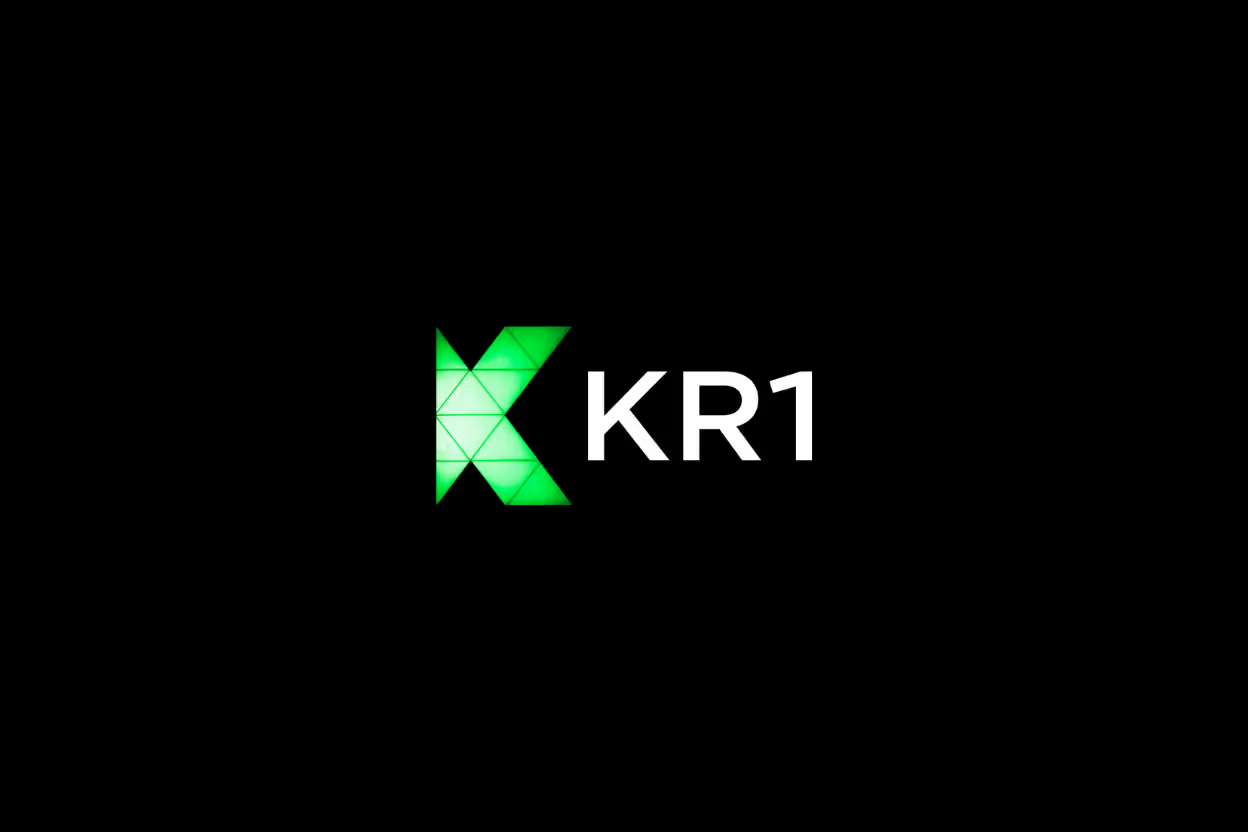Every top crypto investor has access to the same public data, market dashboards, and memecoins on the rise. The real edge comes from something less obvious—spotting which narratives are gaining steam, which communities are rallying behind a story, and when the conversation is about to shift. Narrative intelligence isn’t about following hype, but about understanding the deep signals behind what gets funded, built, and adopted.
Missing a rising story can mean missing out on the next blue-chip protocol. Are you seeing the early signs that a new category is gaining traction? Can you tell when a narrative is being amplified by real users or just noise? The best VCs know how to track, decode, and even shape these narratives before the rest of the market catches on. This post explores how narrative intelligence turns information overload into meaningful signals, helping crypto founders and investors spot real momentum—before it becomes obvious.
What Is Narrative Intelligence?
Narrative intelligence is much more than keeping up with crypto meme trends or reacting to Twitter hype. It’s about understanding the stories that drive market decisions, shape community sentiment, and spark new cycles of investment across the blockchain space. At its core, narrative intelligence helps you see the hidden patterns in how information spreads, who amplifies it, and why people rally behind specific ideas or projects.
This skillset separates average VCs from those who consistently spot real potential early. Want to know why some projects take off while others fade? Curious how rumors quickly go from Telegram groups to front-page news? Or why certain memes end up boosting total value locked for entire sectors? Narrative intelligence has the answers. Let’s unpack the basics.
Defining Narrative Intelligence
Narrative intelligence is the ability to detect, understand, and act on the stories shaping an ecosystem. In crypto, stories can drive billions of dollars in flows, fuel new categories, or make a token skyrocket overnight. Narrative intelligence blends several capabilities:
- Listening deeply: Spotting the early mentions and recurring themes in group chats, forums, and news.
- Analyzing narratives: Distinguishing real momentum from short-term noise or manipulation.
- Connecting the dots: Understanding how stories, memes, and public discourse link to actual market movement.
VCs who master this don’t rely on luck. They read beyond surface hype and identify what really moves people and funding.
Why Stories Drive Market Action
People invest in what they believe. That belief is built on more than numbers—it’s shaped by memes, founder threads, influencer takes, and the broader mood. Narrative intelligence reveals how and why stories weave through communities to shape headlines and allocate capital.
Consider:
- Did DeFi summer take off because of unique tech—or because the "money lego" narrative took hold?
- Do new sectors get attention due to breakthrough code or because a story about "fixing X with web3" finds believers?
- Why do some projects get endless attention while others with similar fundamentals are ignored?
These are all narrative questions. Spotting these trends early grants an edge in both investing and building.
The Tools Behind Narrative Intelligence
Today’s narrative intelligence isn’t just intuition. Savvy VCs and teams use a mix of technology and hands-on monitoring:
- Natural language processing tools for real-time tracking of sentiment, meme trends, and recurring key phrases.
- Social network analysis to map influential accounts and gauge organic versus manufactured excitement.
- Manual monitoring of Discord, X (Twitter), Reddit, and Telegram for new movements.
These tools help answer questions like:
- Who is driving a surge in conversation about a new L2?
- Are the top accounts real people or paid actors?
- Is the growth of a meme organic or artificially spiked?
Why Narrative Intelligence Matters Now
Crypto markets move at internet speed. Missing the rise of a narrative means missing key investment windows. Conversely, overreacting to manipulated “pump and dump” stories burns capital and trust. Narrative intelligence is about seeing signal through noise, letting you act before the crowd.
In short: Narrative intelligence turns raw chatter into actionable edge. It’s not about chasing hype, but about knowing which stories really move markets—and doing something about it before everyone else catches on.
Why Narratives Move Markets in Web3
Narratives are the heartbeat that drives value cycles across crypto. They transform complex technology into relatable stories, setting the direction for where capital, talent, and community attention flow next. When VCs tune in early to these shifts, they don’t just ride the wave—they catch it before the crowd, spotting bull runs, category leaders, and risk events first.
Real-World Examples: From Bitcoin to DeFi
History shows how quickly the story can change in Web3, moving markets with it. Here’s how narrative shifts have unlocked new cycles:
- Bitcoin: From Cypherpunk to Digital Gold
In the early years, Bitcoin was framed by technologists as digital cash for the internet—a revolutionary peer-to-peer money. After the first big bubbles faded, a new narrative took hold: Bitcoin as “digital gold.” This simple idea, echoed by early VCs and big names like Paul Tudor Jones, made institutions and everyday savers rethink BTC as a hedge against inflation. The “digital gold” story turned a fading experiment into a trillion-dollar asset. - Ethereum: Smart Contracts Find Their Story
Ethereum entered as the first credible “world computer,” but it took time for its core story to gain traction. Initial use cases ranged from DAOs to ICOs, but things exploded when the “building blocks for DeFi” meme caught on. Smart contracts shifted from a developer playground to the foundation for permissionless finance. VCs funding primitive protocols like Maker and Compound saw how the story was changing—long before TVL numbers or mainstream buzz caught up. - DeFi Summer: Money Legos and Permissionless Yield
In 2020, a new storyline swept across Telegram and Crypto Twitter: DeFi apps as “money legos.” This metaphor unlocked excitement, showing how composable protocols could be stacked to create new financial products. Projects like Yearn, Synthetix, and Uniswap rocketed as the meta shifted from trading tokens to farming and stacking yield. Veteran VCs spotted creator clusters and rising “DeFi” mentions in Discords and Medium blogs well before headlines caught up. - Recent Cycles: BTCFi, RWAs, AI Agents
In 2025, strong narratives are again reshaping what’s possible: Bitcoin DeFi (BTCFi) now drives the asset’s utility—and hundreds of millions in bridge activity—from Solana to Sui. Real World Assets (RWA) stories, led by institutional giants like BlackRock, are pushing major inflows and regulation conversations. AI-powered agents, already a $5 billion market cap trend, have become the “new DeFi” in crypto VC circles.
Key question to ask: How do top VCs spot the power of these stories before they show up in your dashboard? It’s narrative intelligence, not just data.
Reader Question: How Can Narrative Intelligence Warn of Risks?
Founders and investors often wonder:
Can narrative analysis really alert us to threats or orchestrated attacks as well as new trends?
The short answer—yes.
When you track stories not just for buzz, but for signs of negative coordination or shifts in community mood, you gain a real-time radar for risk. For example:
- The Cetus DeFi Exploit (2025)
Cetus, a top Solana-based DEX, surged in TVL as the BTCFi wave hit. But weeks before a $220 million hack, narrative tracking platforms showed a sudden increase in negative sentiment and mentions of “smart contract risk” across Discords and X. Some VCs moved capital out early, noting the tone shift and coordinated threads by rival projects and smart contract auditors. The lesson:- Rising risk narratives often show up before code is exploited or TVL leaves.
- Narrative shifts can signal malicious campaigns—or community-led “bank run” events—well before the market reacts.
So, staying narrative-aware works both ways. It’s not just about catching upside. It can warn you of risk, help you manage your positions, and inform your communications before a hostile campaign, FUD storm, or technical exploit turns into breaking news.
To use narrative intelligence well, always ask:
- Who is driving this story?
- When did sentiment shift—organically or all at once?
- Are concerns anchored in evidence or manufactured hype?
Spotting risk before it’s obvious is often about seeing where the story breaks—not just what the data tells you. In crypto, reading sentiment can be as important as reading code.
How VCs Use Narrative Intelligence as an Edge
Venture capital success in web3 hinges on more than numbers, tech, or tokenomics. The real edge comes from reading the room at scale—spotting where stories are coming from, and who is shaping them, before the rest of the market reacts. Narrative intelligence gives VCs a toolkit to see both opportunity and risk, especially in a space where reputational stakes and hype cycles run high.
Detecting Manipulated Narratives and Avoiding Traps
Crypto is famous for narrative-driven rallies, but also for coordinated shills, pump schemes, and manufactured sentiment spikes. Smart VCs use narrative intelligence to separate signal from noise—especially when a new coin or sector suddenly trends.
Here’s how narrative-savvy VCs avoid getting burned:
- Spotting Artificial Hype: Narrative monitoring tools help uncover activity that looks organic but is actually boosted by bots, paid shills, or coordinated Telegram groups. When a narrative heats up too quickly, trust is built by investigating its source, not just its size.
- Early Warning for Reputational Risk: Narrative analysis often spots risk before the numbers. Sudden increases in posts about “rug pulls,” “smart contract bugs,” or negative threads on prominent forums can be an early sign of trouble. Successful VCs act on these signals, moving capital or supporting founders before a story breaks wide.
- Avoiding “Echo Chamber” Traps: Echo chambers often amplify low-quality projects. Narrative intelligence helps VCs map conversation overlap and trace stories to their origin, recognizing when similar language or memes move across otherwise unrelated communities—a classic sign of manufactured stories.
- Seeing Through FOMO Campaigns: High-profile memecoin pumps or DeFi trends often rely on aggressive influencer campaigns. Narrative intelligence exposes when a handful of wallets or accounts are driving what looks like mass adoption.
- Managing Downside: If a negative campaign or “FUD storm” builds, reading the narrative lets VCs and founders get ahead by shaping communications or correcting misinformation in real time.
In crypto, losing sight of story manipulation can be as risky as missing the next blue-chip winner. Narrative intelligence is a radar that keeps capital, reputation, and founder relationships safer.
Reader Question: What Tools Do Leading VCs Use?
Founders often want an inside look at the tools and approaches real VCs rely on to gain narrative insight. Here’s how the top firms actually keep their edge:
- Natural Language Processing (NLP) Platforms: Many leading funds use advanced NLP dashboards that analyze sentiment, keyword spikes, and meme trends across X (Twitter), Discord, Telegram, and long-form posts. Tools like Spindl, LunarCrush, and proprietary dashboards let VCs track narrative velocity in real time.
- AI-Driven Social Mapping: AI scrapes public forums and chats, building maps of who is influencing whom, which accounts are amplifying stories, and how fast information is spreading. This network view helps VCs see both organic growth and manufactured campaigns.
- Custom Alert Systems: High-frequency monitoring tools flag terms linked to both opportunity and risk—like “BTCFi,” “AI partner,” or more negative signals such as “exploit,” “scam,” and “rug pull.” Early alerts help avoid late entries or early exits that miss the real story.
- Manual “Human in the Loop” Checks: No tool replaces hands-on checking. Leading VCs pair machine insights with manual reviews—joining private Discords, talking to superusers, and tracking Telegram thread origins. This hybrid approach gives much deeper context.
- Competitor Intelligence Platforms: Tools like Nansen, Token Terminal, and Arkham provide wallet-tracking data that can help link narrative spikes to actual on-chain activity. Did a story drive real capital movement, or was it just chatter?
Many founders also ask if these setups require massive budgets. The answer is no—while the biggest firms build custom pipelines, many open-source and web-based dashboards offer a solid starting point for tracking web3 narrative flows.
The message is simple: top VCs invest in storytelling analytics as carefully as they invest in protocols. Narrative intelligence is the difference between chasing stories and writing the next one that matters.
Opportunities and Pitfalls for Crypto Startups
Crypto startups sit at the crossroads of massive opportunity and real risk. Breakthrough ideas can attract communities, funding, and VC interest at record speed, but even promising teams hit obstacles that stall growth or threaten survival. Understanding these paths—and how narrative shapes every step—sets the best founders apart.
A fast-growing protocol doesn’t just need great code or bold mission statements. Founders must manage their project’s story and reputation, especially when markets turn volatile or competitors get loud. Failures often trace back to neglected user retention, security oversights, regulatory missteps, or simply losing control of the story. Ongoing market research, technical diligence, and clear dialogue with communities keep startups on track.
So, how can web3 founders shape, guard, and amplify their story while sidestepping known pitfalls?
Practical Steps for Founders: Shaping and Defending Your Story
The stories about your protocol will circulate with or without you. Make sure you guide them. Here are practical tips to help you track, shape, and defend your project’s narrative:
Set Up Real-Time Narrative Alerts
Stay ahead of market chatter by activating keyword and sentiment alerts across X (Twitter), Discord, Telegram, and even niche news sources. Monitor for both your protocol’s name and key sector terms. Tools like LunarCrush or Meltwater help here, but even free options like TweetDeck give early warning of changing sentiment or coordinated attacks.
Ask: Are user complaints or FUD storms rising in volume? Are key communities writing about your product with different language this week?Choose Communications Partners Who Reflect Your Values
Work with PR firms, advisors, or partners who deeply understand web3 and your mission. Misaligned partners can distort your message, sometimes creating half-truths or hype that backfires. The right partners not only share news, but also work in sync during crises, preserving credibility and building trust.
Cultivate Authentic Community Voices
Handpick genuine supporters as early ambassadors or moderators. Arm them with accurate information and empower them to answer questions, correct misinformation, or boost official content. Organic voices cut through paid noise and show that your project cares about real users, not just PR.
Host Regular Live Q&As and Feedback Loops
Foster trust by running AMAs, Twitter Spaces, or Discord hangouts where leadership faces tough questions and updates the community directly. Collect feedback, clarify what’s real versus rumor, and use this input to shape both roadmap and communications.
Readers often wonder if negative sentiment online signals bigger risk. These sessions help you spot brewing issues before they become headlines.Work Closely With Legal Advisors From Day One
Regulatory moves (from jurisdictions like the US, Europe, or Asia) often drive sudden narrative shifts. Secure legal guidance early to stay compliant and prepared for headline risks. Proactive legal alignment reassures partners, users, and investors—keeping your narrative resilient under scrutiny.
A strong story doesn’t just attract users—it’s your shield during tough times. If you ignore the conversation, others will own it for you. By taking these steps, founders can spot problems early, build loyal believers, and steer the story when it counts most.
Conclusion
Narrative intelligence has become a requirement, not a nice-to-have, for VCs and founders building in web3. In 2025, success flows to those who read signals early and understand not just what people say, but why they say it and where the story leads next. Spotting new narratives before they go mainstream unlocks opportunities that pure metrics can't show.
Ask yourself: Are you identifying the story arcs before they reach your dashboard, or are you chasing the market when the window is already closing? Now is the time to rethink narrative tracking as a critical part of your due diligence, strategy, and risk management. Adopting this mindset separates those guessing at trends from those shaping them.
Thanks for reading. Reflect on your approach, start measuring story momentum as closely as you measure on-chain activity, and share your methods with the next wave of builders. In a cycle where the narrative drives the numbers, only the narrative-aware will keep their edge.









